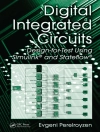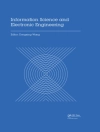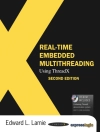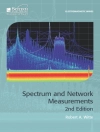A comprehensive guide to computer assisted exercises
Readers can turn to this indispensable reference guide for
comprehensive and lucid coverage of the operational, technical, and
organizational knowledge needed to harness successful and
constructive computer assisted exercises (CAX) and war games. It is
geared also toward large civilian organizations that are looking to
teach and test their strategies and procedures without the added
cost of manpower. Divided into two clear parts, the book
covers:
* Fundamentals and Theory–conflict and warfare; probability
and statistics; simulation; distributed simulation; and
experimentation and analysis
* Combat Modeling, Computer Assisted Exercises, and
Practice–CAX architectures; CAX process; combat modeling; CAX
support tools; communications/information system issues, technical
risks, and risk miti-gation; and exercise centers and
facilities
Computer Assisted Exercises and Training: A Reference Guide is
indispensable reading for research engineers, computer scientists,
software engineers working with modeling and simulation, homeland
security specialists, staff in simulation training centers,
military strategists and commanders, and many others. It also
serves as a valuable textbook for modeling and simulation courses
at the upper-undergraduate and graduate levels.
Table of Content
PREFACE.
ABOUT AUTHORS.
PART I FUNDAMENTALS AND THEORY.
1 Introduction.
1.1 Contemporary Security Environment.
1.2 Exercises.
1.3 Military Simulation.
1.4 Scope of the Book.
1.5 Structure of the Book.
1.6 Electronic Resources for the Book.
1.7 Review Questions.
2 Conflict and Warfare.
2.1 Paradigms of War.
2.2 Evolution of Warfare.
2.3 Operations.
2.4 Comprehensive Approach to Operations.
2.5 Review Questions.
3 Statistics and Probability.
3.1 Descriptive Statistics: Population, Sample, Central
Tendency, and Dispersion.
3.2 Probability.
3.3 Random Variable.
3.4 Inferential Statistics.
3.5 Review Questions.
4 Simulation.
4.1 Pseudorandom Number Generation and Realization of Random
Variables.
4.2 Static Simulation.
4.3 Dynamic Simulation.
4.4 Phases in a Simulation.
4.5 Review Questions.
5 Distributed Simulation.
5.1 Distributed Interactive Simulation.
5.2 High-Level Architecture.
5.3 Base Object Model (BOM).
5.4 Review Questions.
6 Experimentation and Analysis.
6.1 Design of Experiment.
6.2 Execution of Experiments.
6.3 Data Analysis, Reporting, and Presentation.
6.4 Review Questions.
PART II COMBAT MODELING, COMPUTER-ASSISTED EXERCISES, AND
PRACTICE.
7 Computer-Assisted Exercise (CAX) Architectures.
7.1 Distributed Exercises and Distributed Simulation.
7.2 Multilevel and Multiresolution Exercises.
7.3 Cross-Level, Joint, and Combined Exercises.
7.4 Excon Structure.
7.5 Response Cells.
7.6 Training Audience.
7.7 Review Questions.
8 CAX PROCESS.
8.1 Exercise Specification.
8.2 Planning and Preparation.
8.3 Execution.
8.4 Analysis.
8.5 Review Questions.
9 Combat Modeling.
9.1 Terrain Modeling.
9.2 Attrition and Movement.
9.3 Challenges in the Quantification for Nonkinetic Warfare.
9.4 Automated Forces.
9.5 Challenges and Approaches in the Implementation.
9.6 Combat Model Data.
9.7 Verification and Validation of Combat Models.
9.8 Experimentation and Analysis of Operational Plans.
9.9 Review Questions.
10 Computer-Assisted Exercise Support Tools.
10.1 Military Constructive Simulations and Ancillary Tools.
10.2 Planning and Management Tools.
10.3 Mediation-Ware.
10.4 Review Questions.
11 Communications/Information System Issues, Technical Risks,
and Risk Mitigation.
11.1 Hardware and Software Requirements.
11.2 Communications and Qo S Requirements.
11.3 Security Issues and Challenges.
11.4 Game Crashes, Checkpoints, and Crash Recovery.
11.5 Shadow/Run Ahead Games.
11.6 Backups and Archives.
11.7 Networking Service Outages and Other Reasons for
Failure.
11.8 Review Questions.
12 Exercise Centers and Facilities.
12.1 Organization of a Training/Exercise Center.
12.2 Design Principles for Training/Exercise Center
Facilities.
12.3 Review Question.
REFERENCES.
ACRONYMS.
INDEX.
About the author
Erdal Çayirci, Chief CAX Support Branch, NATO Joint
Warfare Center, Norway, retired from the army as colonel in 2005.
His research interests include military construction simulation
sensor networks, mobile communications, and tactical
communications. He was an editor for IEEE Transactions on Mobile
Computing and the journals Ad Hoc Networks and Wireless Networks.
Du San Marincic is Subject Matter Expert,
NATO Joint Warfare Center, Norway. His areas of interest have been
the dynamics of a global security environment, multivariate
analysis of societal security dimensions in the area of complex
emergencies, and computer simulation modeling of peace
operations.












